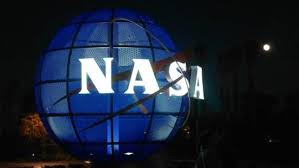
Breaking News
 Nancy Pelosi has officially announced her RETIREMENT at the end of her term, January 3, 2027.
Nancy Pelosi has officially announced her RETIREMENT at the end of her term, January 3, 2027.
 Omeed Malik: The Technocrat Muslim Billionaire Inside MAGA
Omeed Malik: The Technocrat Muslim Billionaire Inside MAGA
 Democrat-led government shutdown is now causing flight delays, threatening air traffic control,...
Democrat-led government shutdown is now causing flight delays, threatening air traffic control,...
Top Tech News
 HUGE 32kWh LiFePO4 DIY Battery w/ 628Ah Cells! 90 Minute Build
HUGE 32kWh LiFePO4 DIY Battery w/ 628Ah Cells! 90 Minute Build
 What Has Bitcoin Become 17 Years After Satoshi Nakamoto Published The Whitepaper?
What Has Bitcoin Become 17 Years After Satoshi Nakamoto Published The Whitepaper?
 Japan just injected artificial blood into a human. No blood type needed. No refrigeration.
Japan just injected artificial blood into a human. No blood type needed. No refrigeration.
 The 6 Best LLM Tools To Run Models Locally
The 6 Best LLM Tools To Run Models Locally
 Testing My First Sodium-Ion Solar Battery
Testing My First Sodium-Ion Solar Battery
 A man once paralyzed from the waist down now stands on his own, not with machines or wires,...
A man once paralyzed from the waist down now stands on his own, not with machines or wires,...
 Review: Thumb-sized thermal camera turns your phone into a smart tool
Review: Thumb-sized thermal camera turns your phone into a smart tool
 Army To Bring Nuclear Microreactors To Its Bases By 2028
Army To Bring Nuclear Microreactors To Its Bases By 2028
 Nissan Says It's On Track For Solid-State Batteries That Double EV Range By 2028
Nissan Says It's On Track For Solid-State Batteries That Double EV Range By 2028
NASA's Galactic Positioning System will enable autonomous spacecraft

Without this system it is not possible to determine a spaceship's location precisely enough to engine-firing just right to go into orbit around a distant moon.
With this technology, autonomous spacecraft could thread a needle to get into orbit around the moon of a distant planet instead of doing a flyby according to NASA scientist Zaven Arzoumanian. A galactic positioning system could also provide "a fallback, so that if a crewed mission loses contact with the Earth, they'd still have navigation systems on board that are autonomous."
When your phone tries to determine its position in space, it listens with its radio to the precise ticking of clock signals coming from a fleet of GPS (global positioning) satellites in Earth orbit. The phone's GPS then uses the differences between those ticks to figure out its distance from each satellite, and uses that information to triangulate its own location in space.
Your phone's GPS works fast, but Arzoumian said the galactic positioning system would work slower —taking the time needed to traverse long stretches of deep space. It would be a small, swivel-mounted X-ray telescope, which would look a lot like the big, bulky NICER stripped down to its barest minimum components.

 The Technocratic Dark State
The Technocratic Dark State Carbon based computers that run on iron
Carbon based computers that run on iron

